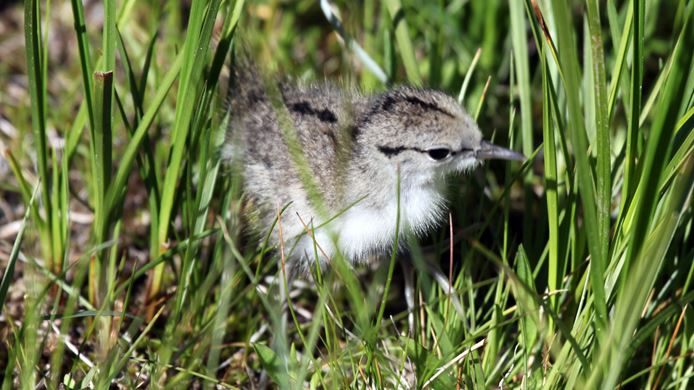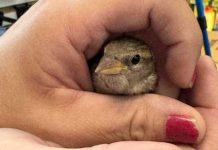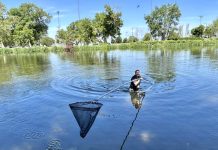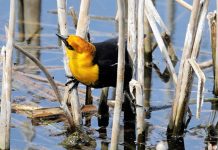SALT LAKE CITY, Utah, April 21, 2020 (Gephardt Daily) — The Utah Division of Wildlife Resources wants people to know what to do if, while on a social distancing walk, they find a baby bird alone on the ground.
It is not unusual to find a baby bird on the ground during this time of year, a DWR statement says. Many birds are hatching and often leave their nests before they are able to fly. Some may also be blown out of nests during spring thunderstorms.
“They usually chirp and call from the nest, waiting for their parents to bring food to them,” Blair Stringham, Utah Division of Wildlife Resources migratory game bird program coordinator, said. “Sometimes, that results in them falling from their perch.”
The most common baby birds that people find are robins (which nest in trees) and swallows (which build their mud nests in eaves and on the sides of houses).
If you find a baby bird on the ground, there are a few things you should do:
Featherless birds
If the bird is very small and still featherless, you should place it back in its nest. If you can’t find the nest, put the bird on a branch safely out of reach of dogs and cats.
“The baby will squawk, and its parents will find it,” Stringham said.
Don’t be concerned about leaving your scent on the bird. Most birds do not have a good sense of smell so if you pick a baby bird up, its parents won’t even know you’ve handled it.
Never take a baby bird home. Most birds are protected by state and federal laws, and it is against the law in Utah to possess wild animals without special permits.
Don’t feed the bird
While it’s fine for its parents to feed the baby bird, you shouldn’t attempt to give it food. Birds have a very specific diet and feeding them something that’s not part of their diet can kill them.
“For example, many people are surprised to learn that robins are among only a handful of birds that can safely eat worms. Most birds can’t,” Stringham said.
Just place the bird back on its branch or in its nest, and let its parents feed it.
Leave it alone if it has feathers
If the baby bird is hopping around, you’ve found a bird that almost isn’t a “baby” anymore. These young birds are called fledglings. They have most of their flight feathers and are very close to taking their first flight.
If the bird isn’t in danger, leave it where you found it. This awkward “hopping” stage typically lasts two to five days. It’s part of the natural process a baby bird goes through before taking its first flight. Its parents are watching the baby bird and are still feeding it.
If you think the fledgling is in immediate danger, then move it carefully to a safer spot nearby. However, if you can’t catch the bird, just leave it be.
Additional information about how to help baby birds is also available on the Wild Aware Utah website.
Baby ducks
If you find a duckling on the ground that looks like it’s been separated from its parents, don’t move it or try to put it in water. Baby ducks should be left alone, unless they are trapped in a storm drain or somewhere else dangerous like in a swimming pool.
If you do discover a duckling in a storm drain, you can contact the nearest DWR office to report it or contact your city officials.







